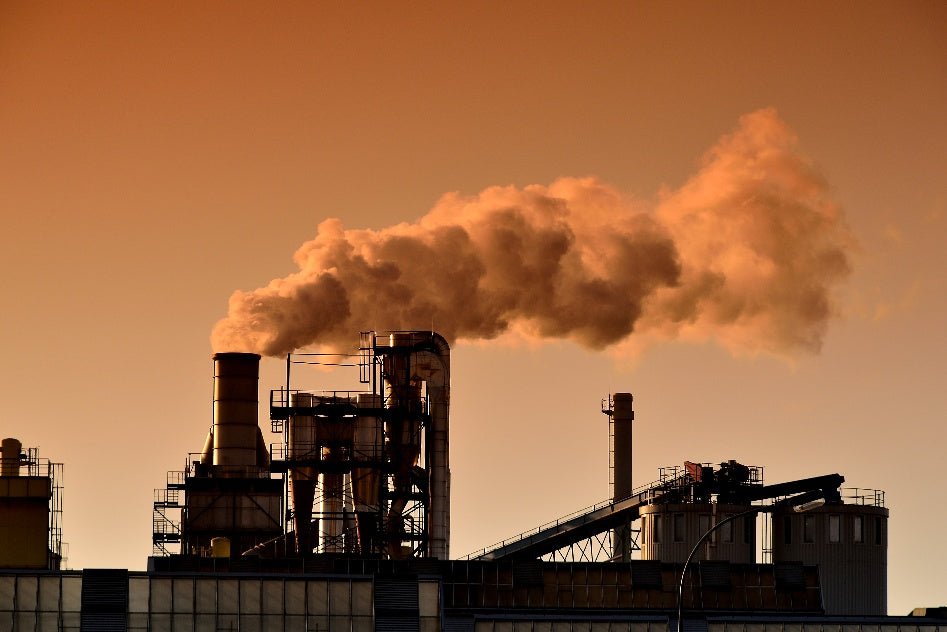
The Chemical Culprits Behind Climate Change
Tags:
Most scientists and world leaders agree that advanced climate change is real, that it’s a problem, and that its triggers are significantly compounded by human inactivity. Organizations such as: NASA, the American Association for the Advancement of Science, the National Academy of Sciences, the Union of Concerned Scientists, the American Chemical Society, the United Nations, the government of nearly every country in the world, and even the Pope - they regard humans and our excessive chemical output as a major factor in climate change.
Climate change, as we understand it today, is the result of heat from the sun trapped in the Earth’s atmosphere by greenhouse gases. Greenhouse gasses are naturally occurring and necessary to maintain life-supporting temperatures on the Earth’s surface. Since the dawn of the industrial era, records have shown an increase of greenhouse gases in the Earth’s atmosphere, greater than any historic increase known to science. The consensus of the scientific community regards this increase in greenhouse gases as a significant factor in causing things like warming global temperatures, increasingly severe weather events, melting glaciers and polar ice caps, and rising sea levels.
Numerous chemicals and substances contribute to the greenhouse effect, and industrial processes are the main sources of these atmospheric chemicals. The World Meteorological Organization releases a Greenhouse Gas Bulletin each year naming the top greenhouse gas emissions. This list includes the heaviest hitters:
Carbon Dioxide
Carbon dioxide is the most notorious greenhouse gas, and for good reason. It is the single largest human-caused contributor to climate change. Current CO2 levels are increasing at a rate nearly 100 times faster than pre-industrial levels. CO2 is long-lived in the atmosphere, so its potential to speed up the greenhouse effect compounds as more CO2 enters the atmosphere. The two most impactful human activities that have contributed to the elevated CO2 levels are fossil fuel burning and large-scale deforestation.Methane
Methane is the second largest contributor to the greenhouse effect. Two-thirds of the methane released into the atmosphere is the result of human activities such as: concentrated livestock operations, landfills, the extraction and transportation of natural gas, and rice farming systems that rely on artificial flooding.Nitrous Oxide
Like all greenhouse gasses, nitrous oxide is naturally occurring in the atmosphere. Emission rates are up 122% compared to pre-industrial levels due to the increasing use of nitrogen fertilizer in farming as well as several industrial practices that emit it as a bi-product. Nitrous oxide further degrades the atmosphere by eating away at the stratospheric ozone, our primary shield against harmful ultraviolet radiation.Halocarbons
A class of chemicals that includes chlorofluorocarbons (CFCs), hydrofluorocarbons (HFCs), and perfluorocarbons (PFCs), halocarbons are mostly man-made, occurring only rarely nature. Commonly used as propellants (bug spray cans), coolants (air conditioners), cleaners, and fire retardants, halocarbons make up only a small overall percentage of harmful greenhouse gasses, but that number is somewhat misleading. Halocarbons take a long time to break down, persisting in the atmosphere from 3,000 to 13,000 times longer than CO2. Given time, they have the potential to accumulate in the atmosphere, collectively inflicting much more damage than CO2. In 1987, the Montreal Protocol initiated a global attempt to reduce halocarbon emissions (CFCs) in an effort to reduce instances of skin cancer and cataracts due to ozone depletion, as well as to curb greenhouse gas emissions. In 2016, the Kigali Amendment added HFCs as a blacklisted chemical. Removing just HFC emissions has the potential to reduce projected global surface temperatures by up to one-degree Fahrenheit. While most people have little control over the industrial processes that emit the majority of greenhouse gases, we as individuals can make choices that support a more responsible future:- Vote for candidates that believe in climate change and want to actively do something to stop it.
- Be aware of your own climate footprint.
- Support organic farming systems whose healthy soils keep CO2 from releasing into the atmosphere and who avoid nitrous-oxide-based fertilizers.








